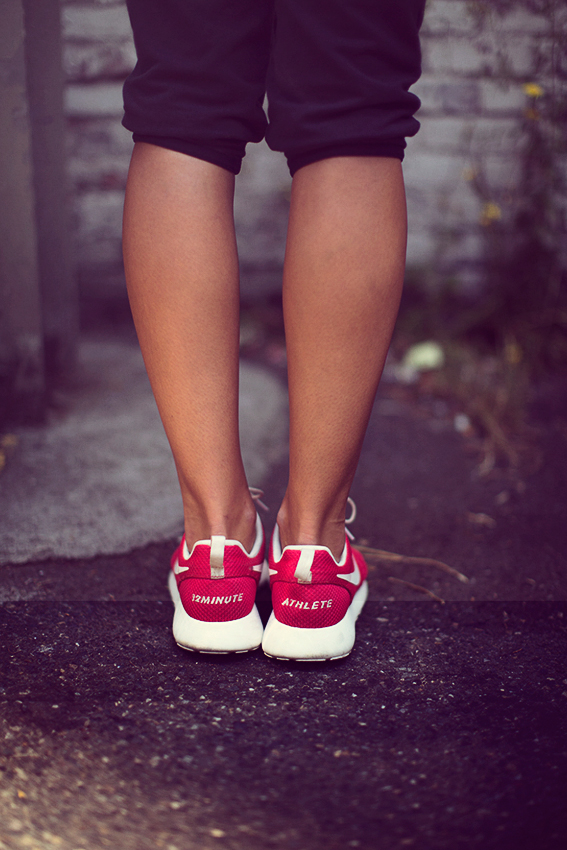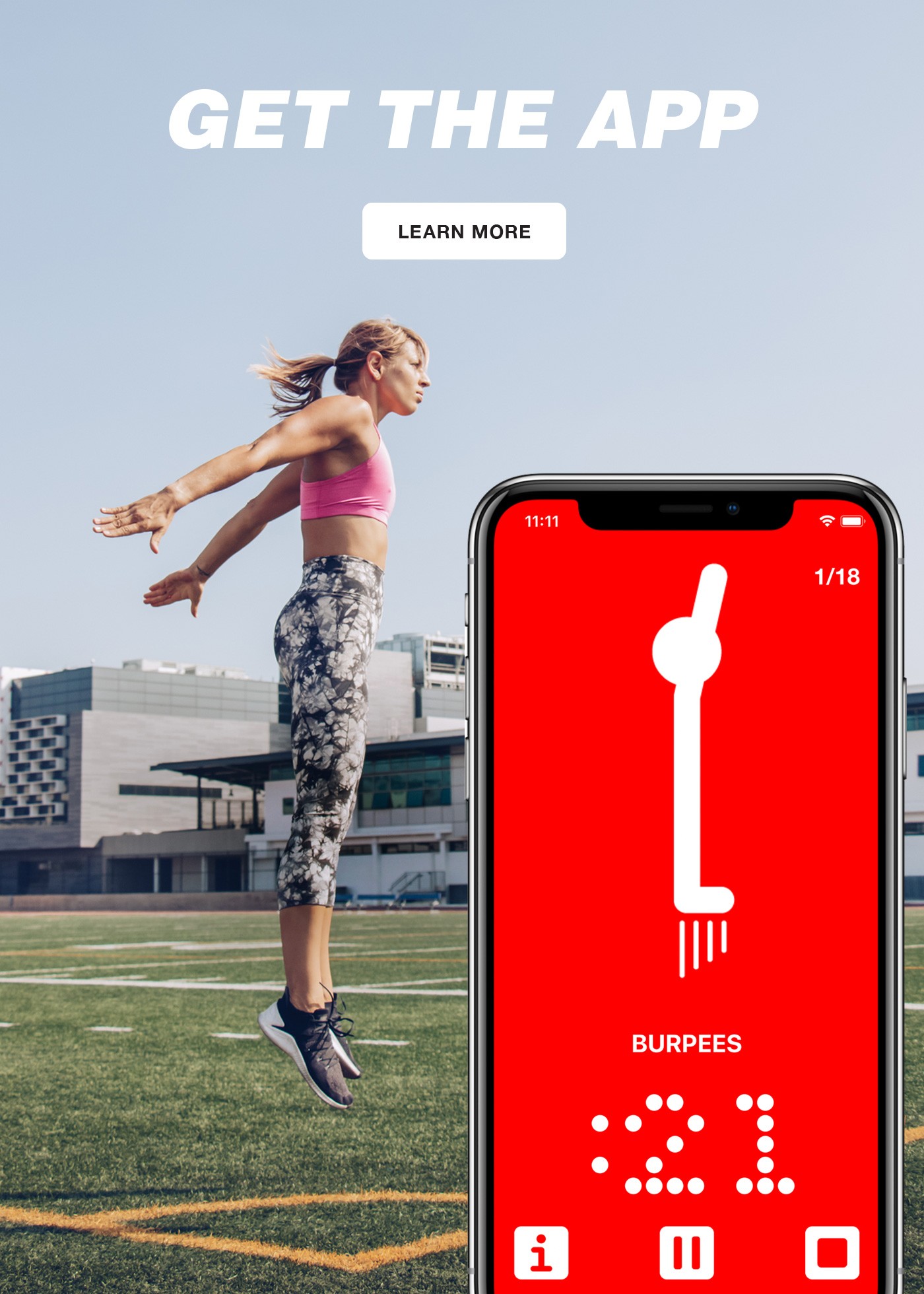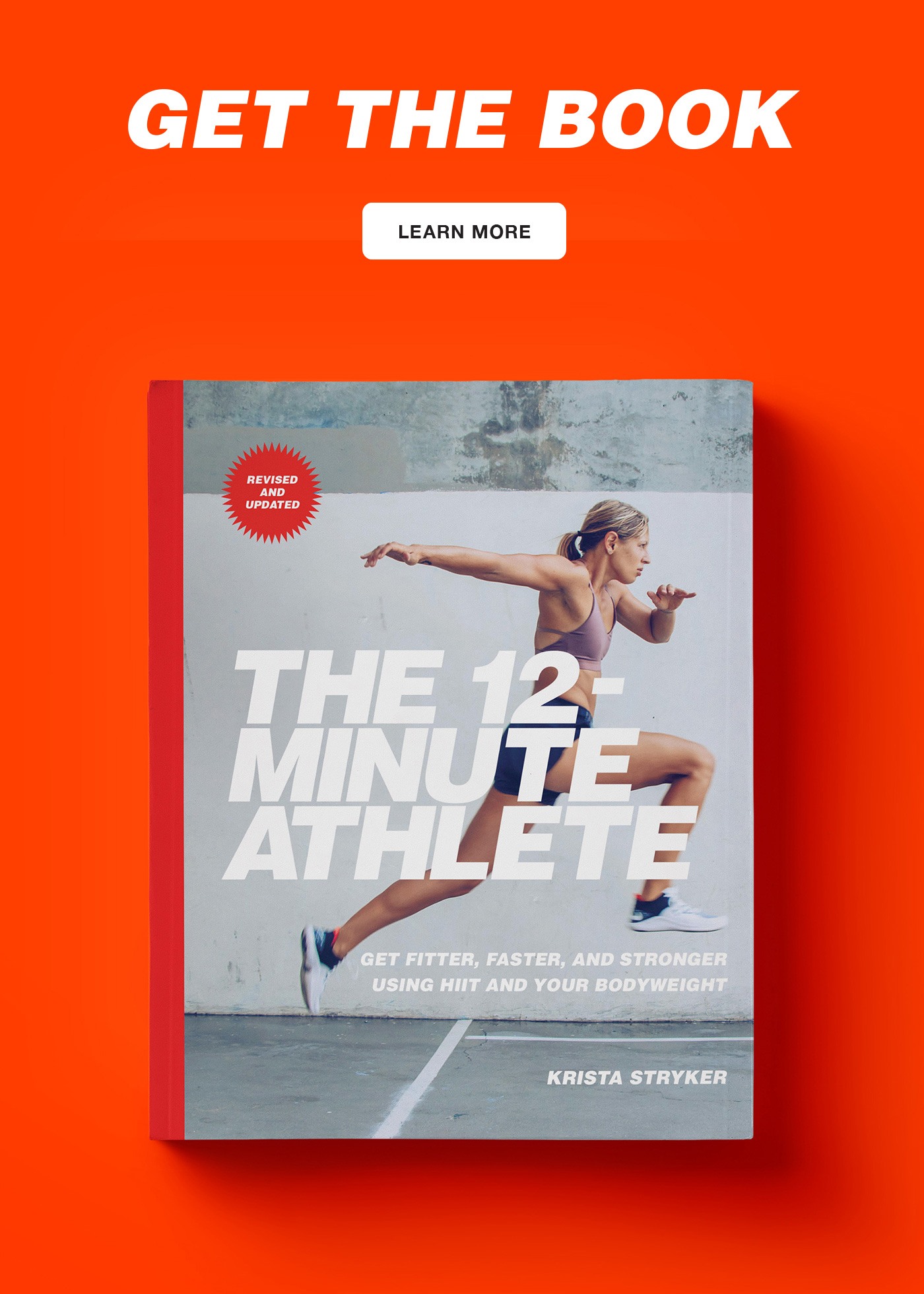
Jump roping, box jumps, burpees, sprints… they can all lead to shin splints, a painful and incredibly annoying injury experienced by almost every single active person ever.
And while it’s often hard to pinpoint the direct cause, shin splints can be the result of a number of factors, including muscular imbalance, inflexibility, muscular overload and even biomechanical irregularities. And they’re one of those injuries that once you get them, they never seem to fully go away.
When I first started working out again after high school sports, I was constantly plagued by shin splints. They were frustrating, annoying, and painful, and prevented me from working out countless times.
And when I started getting into jump roping and HIIT workouts a few years later, they got even worse. My shins and calves hurt so badly it was often hard to walk. I remember several times when I took weeks at a time off of any jumping or running at all—and they still wouldn’t get any better.
And despite how common they are, shin splints tend to be one of those injuries that no one quite knows how to get rid of. Even the personal trainers I used to ask (before I became certified myself) would throw their hands up in the air and recommend little more than rest when I’d complain about shin splints.
But here’s the thing: you don’t have to live with shin splints for your entire life. Because you can get rid of shin splints—and I’m going to tell you how.
It took me years to figure out the best methods for healing this pesky injury, but I’m now happy to say that I never, ever get shin splints anymore. Here are my favorite ways to prevent and treat shin splints:
Foam rolling
Foam rolling is one of the most basic, yet most effective ways of preventing and healing shin splints (and other muscular injuries). You can pick up a foam roller for $10 or $15 at any sporting goods store or online, and trust me, it’s one of the best investments you’ll ever make.
Foam rolling not only increases blood flow, shrinks pain and soreness, it’s like giving yourself a mini maintenance massage—without the hefty price tag.
You should aim to foam roll at least a couple of times a week in order to keep your shin splints at bay. If you don’t know how to get started, read this.
Lacrosse balls (or Yoga Tune Up balls)
Once you decide that foam rolling isn’t quite enough (and if you’re not there yet, you’ll get there, trust me), the next step is to use a lacrosse ball or Yoga Tune Up balls to really get those knots out.
Because while foam rolling is a good overall injury prevention tool, in order to get really deep into the muscle tissue, you’ll need something a little more targeted.
Warning: using a ball to get rid of shin splints will hurt. But the temporary pain is worth it for the long-term shin splints relief.
The stick
I just discovered The Stick a couple of weeks ago—but I immediately fell in love.
It’s great for massaging your entire leg (I’ve even used it on my arms and shoulders), but is especially effective for shin splints. It’s really easy to use, and allows you to control the pressure so you get either a light or medium massage. And if you want it to go deeper, all you have to do is push down harder.
Arnica/biofreeze
If you want to soothe your shins and calves after a heavy foam rolling or lacrosse ball session, I’d recommend either Arnica or Biofreeze.
Arnica is a homeopathic medicine that comes in cream form and can be used to rub onto sore muscles to relieve muscle aches and stiffness and reduce swelling. It helps with those painful knots you probably have from jumping a lot, and is also really good to use if you are a klutz like me and have a habit of running into the edges of tables a lot.
If you want a cooling effect as well as a healing one, try Biofreeze. This minty smelling cream has a similar effect to icing, and helps with increased blood flow and muscle ache relief. The menthol in it has a really nice cooling effect which can feel awesome on just massaged muscles.
Compression socks
I’ll admit that I’ve yet to actually try compression socks, mainly because I get so insanely hot when I work out that the idea of wearing another piece of clothing isn’t exactly appealing to me. But I’ve heard so much about them and all they can do for you, they’re high up on my birthday list this year.
Not only are compression socks supposed to reduce fatigue and increase strength during workouts, they also reduce cramping, speed up recovery, and help to prevent and relieve shin splints. Athletes of all sorts—runners, CrossFitters, HIITers—swear by them.
Stretching regularly
I know, I know: stretching is boring.
Seriously, I can’t even get through an hour of yoga without wanting to fall asleep. But if you want to stay flexible and control your shin splints, you’ve got to do it regularly (i.e. not once every two weeks).
Try and get in the habit of stretching by doing a little after every workout, or while you’re watching TV at night (this helps tremendously with the boredom).
Here are 10 stretches you should be doing on a regular basis as an athlete.
What are your favorite ways to prevent or relieve shin splints? Let me know in the comments!



Because I prefer certain types of running socks, I use the compression leg sleeves instead of compression socks. The more expensive sleeves are better since they are more durable and retain their shape. The ones I bought was $35. And yes they really reduce the chances of shin splits during a race or hard training. They are also useful to use when you are recovering from shin splits.
Thanks for the info Jason! That’s great to know.
Rock tape! I am just getting started with foam rolling but have been plagued by shin splints for over a year. Rock tape has been one of the only things to help me. I haven’t used K-tape but I’ve heard it comes off much faster. I have had rock tape stay on for up to a week (and even then it wasn’t falling off).
Wow, good to know Amy – I’ll have to try that!
I’m on a bit of a tight budget….would it be better to get the stick or a foam roller?
Thanks!
Foam roller! It’s more versatile and you’ll be able to use it on more muscles than the stick.
THANK YOU so much for this information. My son is 18 and is playing baseball in his senior year. He got shin splints a week before his first game and is still battling them. I told him to foam roll them and he laughed at me. Now, he is literally on the floor while I’m typing this with a rumble roller and is crying out in pain. It’s funny but it’s not. So much for Big Papi telling him to stretch and workout before the season came in. Great advice on all of this. We have been doing Rest, Ice, Ibuprofen, Compression and Elevation (RIICE) including the compression socks but it is just such a nagging thing, every time we think we have it under control, it flares back up.
You’re the BEST!!
So glad to hear that Jay! Well, not about your son’s pain, but that the foam rolling is helping 🙂 Bummer that it keeps coming back, hopefully if he keeps it up it’ll eventually get under control.
Hi
I have been struggling with shin splints for over a year and its so frustrating! I was just looking at foam rollers. Does it matter what kind you get? Some look bumpier than others.
Are you supposed to directly foam roll your shins as mine are too tender and sore to do that?
Yes and if it hurts so much you start crying you are doing it right, but you will notice the difference it makes almost immediately
So I was looking for a way to help my shin splints and I was randomly searching google for ideas and I fall upon this page – the first page I see to mention a foam roller. And I had a foam roller, that I hardly used lol, just sitting less then 10 ft away from me, so I tried it out. OMG It helped instantly! I don’t know if it is something that helps initially when you first do it because it confused my nerves or if its something that actually helps in the long run, but my shins have been hurting all day and (and it hurt while doing the rolling) it helped immensely for the bit of time afterwards! I’m definitely going to use ice and foam rolling as my main 2 pain reducers and I’m going to start doing rubber band strength training to help as well.
Thank you so much for having this post written! I hope the foam rolling continues to help! 😀
Yes, it can be a life saver! Such a simple thing but works so well!
Oh, and just so everyone knows (not that anyone cares xD ) I’m going to be trying to compression socks too because if those help while I’m jumping rope it’d be a life saver! 🙂
Cool! Let us know how it goes!
Smooth or bumpy foam roller? Does it matter?